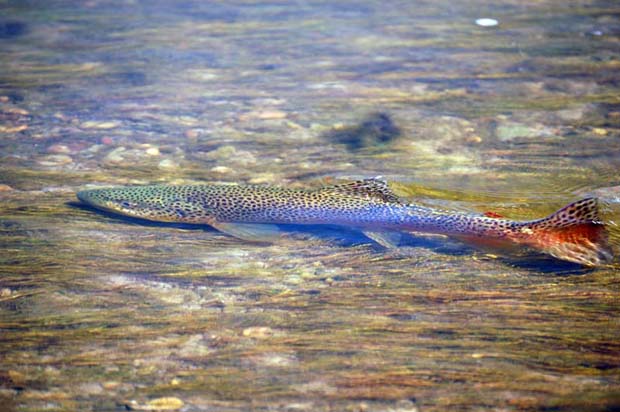By DAVID ERICKSON For The Billings Gazette October 18, 2015
[dropcap]O[/dropcap]utdoor recreation in Montana generates $1.5 billion in wages and salaries, $5.8 billion in consumer spending, $403 million in state and local tax revenue, and supports 64,000 jobs, according to surveys conducted by the Outdoor Industry Association.
Commercial and private fishing, in particular, are vital to Montana’s economy, and the effects of climate change on the state’s ecology and wildlife will have a big impact on that industry.
Tourists come here because of the famed Yellowstone cutthroat trout, for example, a prized game fish that is highly susceptible to warming waters and the invasive species that follow.
If fishing opportunities dry up in Montana, so will tourists’ dollars and the jobs they support.
A disturbing pattern pointing to just such a possibility has emerged, as this past year saw Montana gripped by record high temperatures, a record number of days without rain, record low precipitation, record low streamflows and expanding drought conditions. It’s a recipe for disaster, and all the ingredients are on the table.
On Tuesday, the National Wildlife Federation held a conference call to discuss its new report, “Wildlife in Hot Water: America’s Waterways and Climate Change.”
The report outlines the many ways that climate change is affecting wetlands, rivers and lakes and the fish and wildlife that inhabit them. The report was released just weeks after the U.S. Environmental Protection Agency unveiled its Clean Power Plan, an effort to reduce carbon pollution from the nation’s power plants.
According to Dave Dittloff, a Missoula-based regional representative of the Wildlife Federation, hunters, anglers and wildlife enthusiasts across Montana and the U.S. are seeing the impacts of climate change and many are advocating for changes in energy policy.
“Climate change is rapidly altering the Earth’s water cycles in significant ways, and in turn impacting the fish and wildlife that depend on them,” he said.
Dan Vermillion, the owner of a fly-fishing business in Livingston and chairman of the Montana Fish and Wildlife Commission, said fishing guides are on the front lines of how climate change is affecting Montana’s outdoor recreation industry.
“We have had major river closures in southwestern Montana pretty much one out of every two years, sometimes two out of every three years,” he said. “This year, for the first time, rivers were closed down the second week of July. The ‘hoot owl’ restrictions close rivers at 2 p.m. to give fish a break during the hotter times of year. So we are talking about the Bitterroot, the Blackfoot, the Big Hole, the Beaverhead — pretty much all of southwestern Montana. As an outfitter and a person who is deeply dependent on the flow of tourists to Montana, years like this are getting pretty difficult.”
Outfitters and anglers are forced to crowd onto the few rivers that aren’t closed and consolidate their trips in the early summer months, meaning that fisheries are feeling the impacts of heavy human pressure.
As the waters warm, nonnative species are able to move higher up rivers and streams into the last bastions where highly susceptible cold-water species have been able to survive and stay genetically pure.
Featured Image credit Montana Fly Fishing Outfitter www.southwestmontanaflyfishing. Montana average brown.







